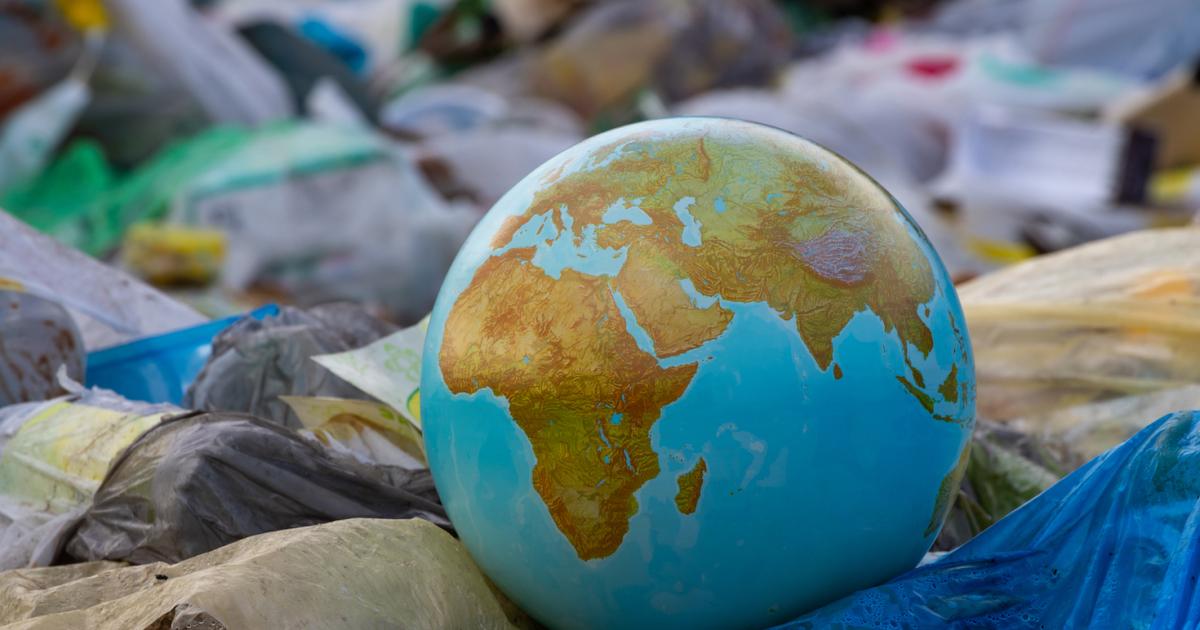Here’s how we can maximize the once-in-a-lifetime opportunity to end plastic pollution
The phrase “once-in-a-lifetime” is overused. For me, it’s galloping over Reykjavik lava fields on an Icelandic pony. For others, it might be sleeping under the Northern Lights, diving with sharks or scaling great peaks.
But imagine if there were a once-in-a-lifetime opportunity that could benefit everyone — ending plastic pollution, for example.
Since the United Nations Environment Assembly’s adoption of a historic resolution in March 2022, an Intergovernmental Negotiating Committee (INC) has been working to develop an international legally binding instrument that will tackle the plastic pollution crisis in a globally coordinated way. Following the most recent meeting in Nairobi in November, a revised draft text of the U.N. treaty was published.
As the crucial second-to-last round of talks begin this week at the fourth session of the INC (INC-4) in Ottawa, Ontario, how can negotiators strengthen alignment behind ambitious treaty options and ensure that this moment maximizes the enormous opportunity to create a treaty that is ambitious, effective and fair?
We already know what works — now we need to make it happen
An ambitious treaty is still possible, but not yet secure.
With limited time left for negotiations to deliver by 2025, ambition and speed is of the essence. At this stage, moving forward at pace means mandating what we know is possible. Creating clear global rules around the solutions that are already proven to work in practice will help break the gridlock in areas where no meaningful change can happen otherwise.
Here’s a slogan worth repeating: We cannot recycle our way out of this. Upstream action — that is, substantially reducing the need for producing and using ever more virgin plastics — is vital.
Eliminating plastics commonly identified as problematic or avoidable is a necessary starting point. In particular, we must prioritize high-leakage and short-lived plastic applications. 40 percent of total plastic waste globally is created by packaging — from single-use carrier bags and beverage bottles to takeaway tubs, pots and trays. The treaty should therefore initially focus on the types of plastic most likely to end up in the environment. Nobody wants to see fjords filled with flexible sachets, swim through shoals of shrink wrap or stare into skies obscured by microplastics. The treaty also needs to agree on clear global rules for the restriction and phaseout of plastic products containing certain chemical substances and polymers of concern.
One of the biggest opportunities to cut plastic leakage, as well as lower emissions and pressure on natural resources, is through reuse. But individual countries and businesses alone cannot galvanize such a shift without legislation. Voluntary action is important — but it’s not sufficient by itself. The treaty has a vital role to play in helping to unlock the reuse revolution on a global scale.
At present, Extended Producer Responsibility (EPR) policies — which ensure all industry players fund the collection and treatment of their plastic packaging — are not consistently applied across all geographies. Harmonizing EPR schemes on a global scale is therefore essential to meaningfully scale collection and recycling infrastructure. For plastic that cannot be eliminated, we need clear requirements on both product design and the shared infrastructures and systems needed to help keep them in circulation and reduce environmental leakage.
A treaty must be ambitious, fair and effective
A well-designed global plastics treaty will stimulate investment and innovation, unlocking long-term and lasting environmental, economic and social benefits for businesses of all sizes and scales, including micro-, small- and medium-sized enterprises (MSMEs). To ensure effective and fair implementation, the treaty should also establish and strengthen specific policy measures that support MSMEs during transition, such as differentiated implementation timelines and dedicated financing.
Clarity is also needed not just for the rules themselves, but in how they should be implemented and regulated once in place. This requires the creation of effective monitoring and reporting systems, as well as clear requirements for plastic-related disclosures to ensure that corporate reporting takes place in a harmonized and coherent way.
Global rules are good for business — and good for us all
There is a lot of text on the table. What happens next is crucial. With so much at stake, negotiators should be confident in the knowledge that an ambitious U.N. plastics treaty is widely supported through an unprecedented level of shared ambition across the plastics value chain, including more than 200 organizations who have joined the Business Coalition for a Global Plastics Treaty.
This isn’t just a once-in-a-lifetime opportunity because of the negative scenarios we must avoid, but because of the positive future it can create — for business, society and the natural world.

